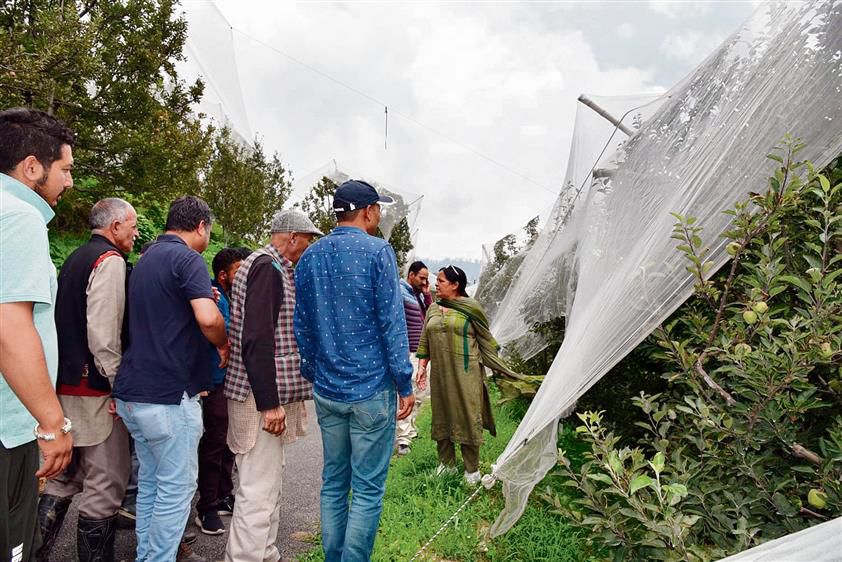Apple trees in upper Shimla hit by leaf disease, mites
Subhash Rajta
Shimla, July 15
The foliar disease of alternaria and other leaf spots and the infestation of mite have assumed serious proportions in the apple orchards in the upper Shimla area.
Teams of scientists from the University of Horticulture and Forestry, Nauni, have found a widespread combination of foliar disease and the insect. The damage in several orchards surveyed by these teams is extensive and irreversible.
When attacked by alternaria, the leaves develop brownish spots, which gradually grow bigger if not cured and eventually leaves turn yellow and fall off.
With leaves gone, the fruit quality deteriorates as it doesn’t get any nutrition.
“The disease exhibited a widespread distribution, affecting a large number of plants in the surveyed orchards. The severity of the disease varied in orchards, with maximum leaf disease severity reaching 56.3 per cent,” said Usha Sharma, senior scientist and head, KVK Shimla.
The team headed by Sharma visited several orchards in Rohru and Kotkhai, the two biggest apple belts in the region.
Usha Sharma said the situation had become more problematic due to the combination of mite and alternaria. “There was a lot of mite infestation due to dry conditions, which left the leaf quite weak. And then alternaria and other leaf spots made the situation even worse. Several orchards have already been badly damaged,” she said.
Sharma attributed the spread and severity of the disease to the combination of less rain, high humidity and high temperature. “Higher humidity and temperature in the range of 25 degrees Celsius to 30 degrees Celsius offer congenial conditions for the spread of the disease. A good rainfall will help in checking the spread of the disease,” she said.
She also blamed indiscriminate sprays of insecticide and fungicide for the rapid spread of the disease.
“Injudicious use of chemical sprays, including the mixing of nutrients, insecticides, and fungicides, led to phytotoxicity and weakened the plant health, increasing susceptibility to disease,” the scientist said.
Lokinder Bisht, a progressive apple grower from Rohru, said that he had
not seen such widespread attack of mite and alternaria in years.
“These are not new diseases, but this time it has reached epidemic proportion, especially in the orchards located at lower than 6,500 feet,” he said.
What should growers do
- Enhance air circulation through proper pruning, remove grass and infected plant debris from the orchard floor, and manage soil moisture levels to reduce disease pressure
- Fungicides/insecticides should be used judiciously, adhering to recommended dosages and spray intervals. Rotation of fungicides/insecticides is essential to prevent resistance development
- Regular soil testing and appropriate fertilisation promote overall plant health and disease resistance
- Consistent orchard surveillance enables early disease detection and timely intervention
- Effective management of root rot, collar rot and canker is essential for overall tree health and disease resistance
Dry conditions caused mite infestation
There is a lot of mite infestation due to dry conditions, which has left leaves weak. Alternaria and other leaf spots have made the situation worse. — Usha Sharma, scientist









